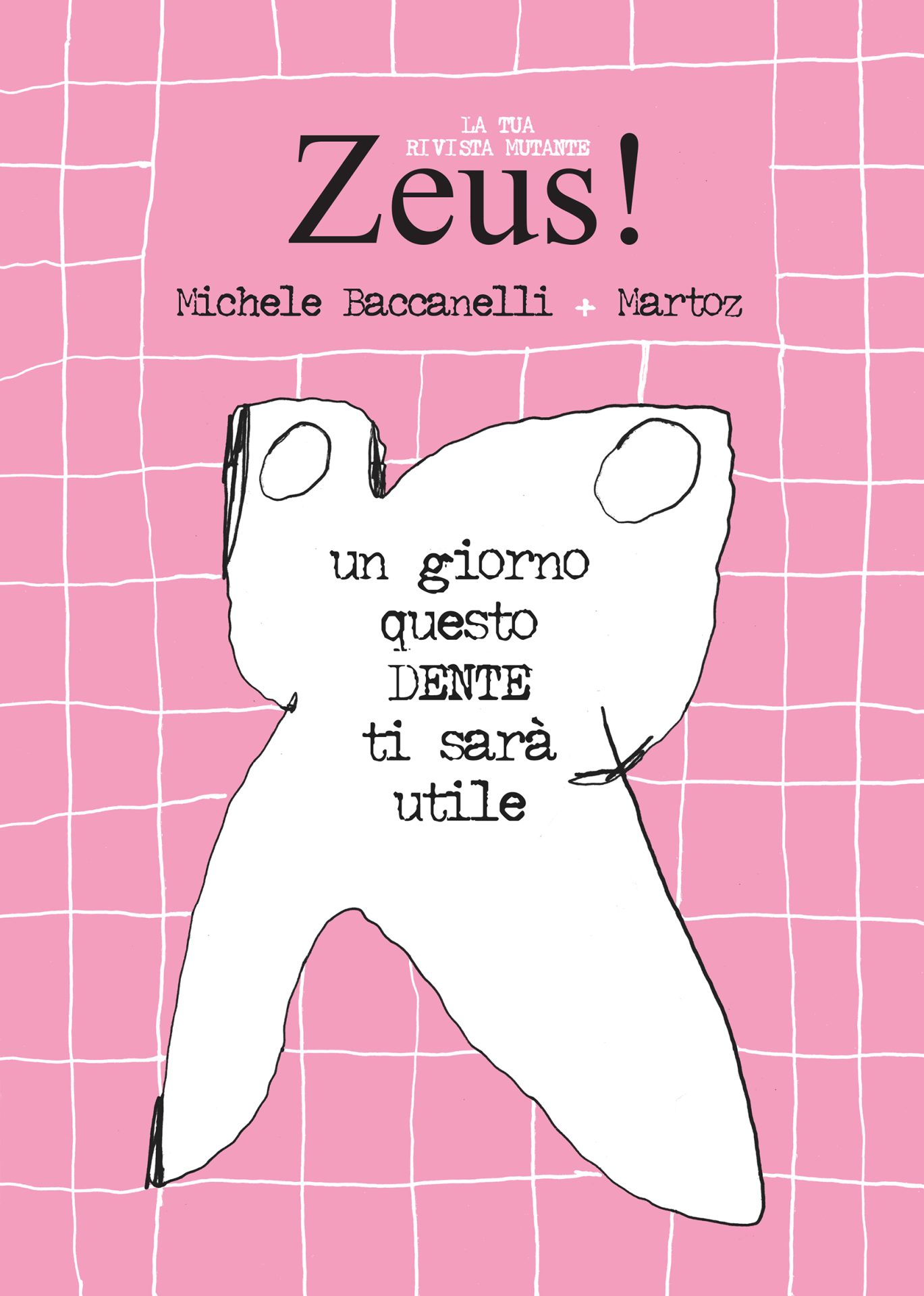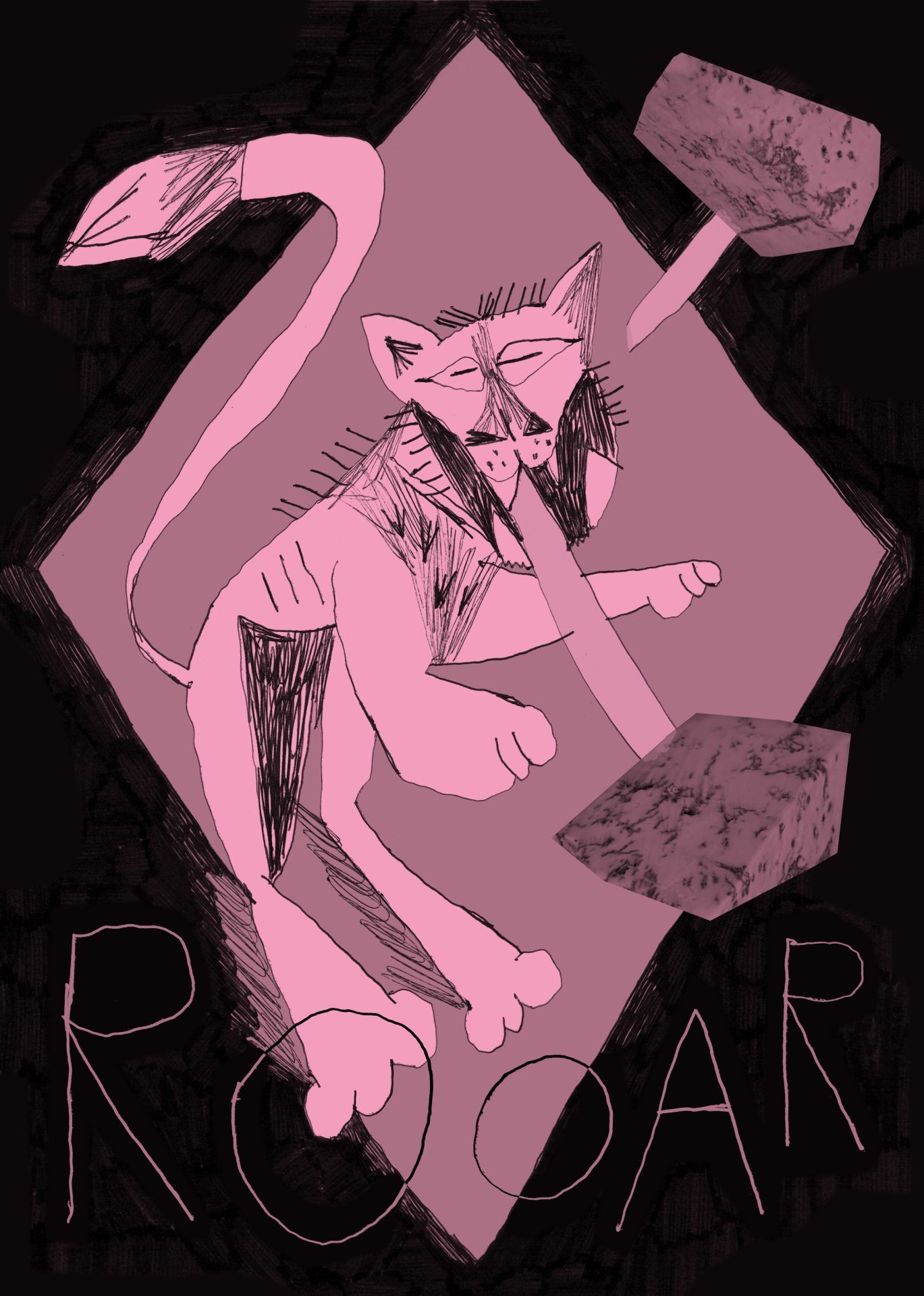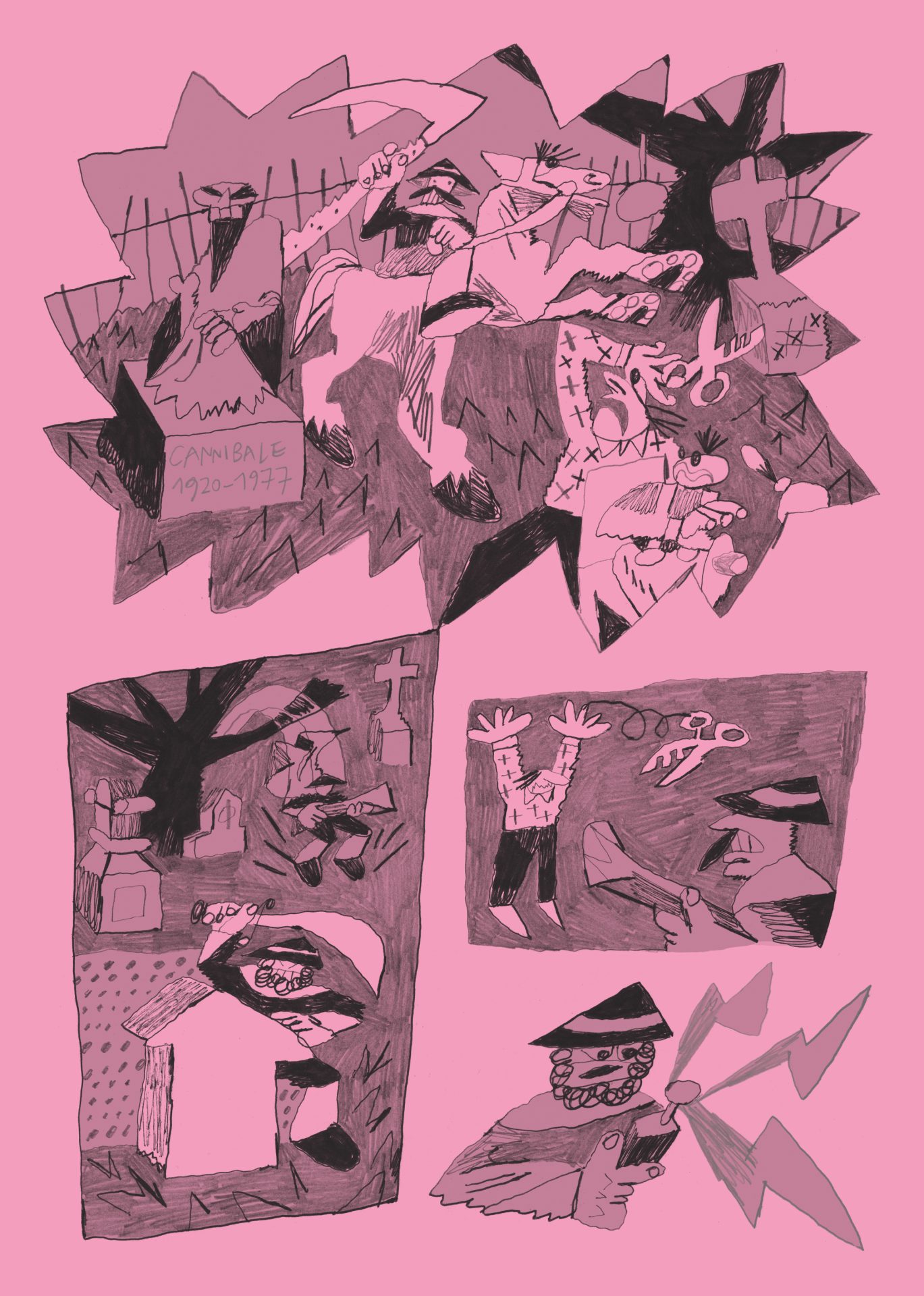Of teeth, art and disability: this is how a free comic is born

The comic book One day this tooth will be useful to you cannot leave you indifferent: it is a bomb, but a good one, one that bursts with creativity. A crazy journey, in a world full of oddities. The ferrymen are Michele Baccanelli , a young author with autism, and the illustrator Alessandro Morelli , aka Martoz (who drew the cover of the issue of VITA 10 anni di fratello papa , dedicated to Francis).
The magazine is a monothematic issue of Zeus!, a publication of the social cooperative Il Cardo of Edolo, in Val Camonica, which for twenty years has collected the works of the people who frequent the day center and which sometimes - as in this case - involves external artists for some projects. "I felt free and I discovered a strong affinity with Michele", confides Martoz.

Martoz, how did this adventure go?
It was really nice. What I did during the project was to encourage Michele to write, without conditioning him . It's not always easy. For example, if you ask him "Is this table red?", he might answer yes, but if you then ask him "What color is this table?" he'll answer that it's green. You have to find the right way, without influencing his answer. I exchanged emails, video calls and in-person meetings with him; he preferred the former, because he likes writing more, he has a bit of difficulty speaking. In the end I took all the stories he wrote - which were actually chapters of the same story - and adapted them into comics.

While working on this issue of Zeus!, did you get an idea of the relationship between art and disability?
This is a crucial year, because there is an experimentation of the reform on disability, which tries to introduce some novelties, in application of the 2006 UN convention, which established that people with disabilities have the right not only to be assisted in order to survive, but to have a stimulating life. In this, therefore, the Zeus! project arrives before the Italian State. But one thing we often say is that these people are first artists who express themselves in a way that they have developed over the years and then people with disabilities. I am a designer: when I have to think, I start drawing and suddenly I find the right balance. Michele is a writer: precisely because he does not speak, his way of expressing himself is writing. I do not know what the relationship is between art and disability, but I know that those who contribute to Zeus! in Val Camonica are “stars”.
In what sense?
The magazine has a thousand subscribers, who wait for it every two months to see what new follies they find inside. Zeus! is fun, it is not a publication that is bought only to support the cooperative or for ideology. It is bought because it is beautiful.
So it's art, not "art therapy".
Of course, in the sense that it is a really valid product. It is a beautiful object. Those who know it for the first time have a sort of “epiphany”; if you go to the archive and browse through twenty or so, you say to yourself «Here is a treasure».

What has this job given you, as a person and as an artist?
It was very challenging, but in a good way. It's not something you can do with your left hand. It was stimulating, it was touching, it was fun. I entered this project on tiptoe, with great respect. At the beginning there was the desire to understand what the perimeter was, how to express myself, how to manage the situation. I volunteered for about two years with people with disabilities, I'm not new to this type of sensitivity, but for an artistic work I had to first of all know the terms. Each of them has a way of defining themselves that is absolutely personal. There is a whole world behind it, which is not limited to the correct language that you can learn in theory. Then it was very interesting to discover the similarity between me and Michele.
In what sense?
Whoever put us together to work on this project had a far-sighted vision . My style was perfect for transforming his writings into images. We have a strong connection. I was just at a comics festival in Catania; a lady was leafing through the magazine while I was telling her about the projects. She said to me: «You can see from the drawings that he is autistic». My illustrations are strange, especially in this case where there were no limits; usually when I work with a screenwriter I am limited, “normalized”. In this case the texts were naturally strange and the last problem was that the drawings were crazed.

And so he felt freer…
I was very free. My only constraint was in the script phase, it wasn't always easy to find that line that more or less coherently unites all the chapters, but in the end we succeeded . Then the comic, in my opinion, maintains a character of ambiguity: Michele is indomitable, he doesn't write stories that follow the Western canons of the box office or that are understandable to a pop audience. I tried to respect the texts in the adaptation phase. However, if a person reads carefully, the main plot is very simple. There is a tooth that is stolen, it is exchanged two or three times between the factions and in the end one wins. If you want to find them, there are also hidden messages and connections. This is also a very inclusive story.
How come?
Nobody forced it. There is no ideological pressure from the editorial staff on the people who contribute, they basically do what they want. The main villain is in a wheelchair, the tooth fairy is a trans character; at one point there is even a marriage between two women.
In the article, some tables of the comic
- Tags:
- Art
- autism
- Disability
Vita.it





